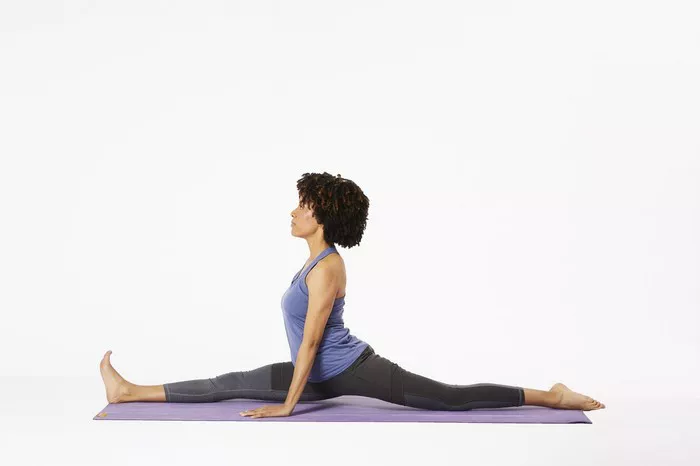Estrogen is a critical hormone primarily responsible for the development and regulation of the female reproductive system and secondary sexual characteristics. Beyond reproductive health, it plays a pivotal role in bone density, cardiovascular health, skin elasticity, and even mood regulation. With fluctuating estrogen levels during various stages of life such as puberty, pregnancy, and menopause, many seek natural ways to maintain hormonal balance. Among these, yoga has garnered attention as a potential non-invasive method to support hormonal health. But can yoga truly increase estrogen levels? This guide explores the scientific, physiological, and anecdotal evidence linking yoga with estrogen production.
1. Understanding Estrogen and Its Importance
Estrogen is a group of hormones including estradiol, estrone, and estriol, with estradiol being the most predominant during reproductive years. Produced mainly by the ovaries, estrogen governs numerous functions such as regulating the menstrual cycle, maintaining pregnancy, and preparing the body for conception. Low estrogen levels can lead to symptoms like mood swings, hot flashes, vaginal dryness, and decreased bone density. Given its importance, maintaining optimal estrogen levels is essential for overall well-being.
2. The Science Behind Hormone Regulation Through Lifestyle
Hormonal balance is influenced by a combination of genetic, environmental, and lifestyle factors. Stress, poor diet, sedentary behavior, and lack of sleep can all contribute to hormonal imbalances, including reduced estrogen production. Conversely, certain lifestyle modifications—like a balanced diet, regular exercise, adequate sleep, and stress reduction techniques—can support hormone health. Yoga, which encompasses physical postures (asanas), breath control (pranayama), and meditation, has been shown to impact these contributing factors positively.
3. How Yoga May Affect Hormonal Balance
Yoga can influence hormonal balance in several key ways:
- Stress Reduction: Chronic stress activates the hypothalamic-pituitary-adrenal (HPA) axis, leading to increased cortisol levels, which can inhibit estrogen production. Yoga helps reduce stress through calming postures and mindfulness, thereby decreasing cortisol levels.
- Improved Circulation: Certain yoga poses enhance blood flow to the endocrine glands, including the ovaries and adrenal glands, potentially promoting better hormone production.
- Balancing the Nervous System: Yoga helps shift the body from sympathetic (fight or flight) to parasympathetic (rest and digest) dominance, which fosters hormonal harmony.
Although yoga doesn’t directly inject estrogen into the system, its ability to create a supportive environment for hormone production makes it a valuable ally in hormone health.
4. Yoga Poses That Support Estrogen Production
Certain yoga poses are believed to stimulate estrogen-producing glands and improve hormonal balance. These include:
- Bridge Pose (Setu Bandhasana): Opens the chest and stimulates the thyroid and pelvic region.
- Cobra Pose (Bhujangasana): Enhances circulation to abdominal organs and the adrenal glands.
- Bound Angle Pose (Baddha Konasana): Improves blood flow to the reproductive organs.
- Child’s Pose (Balasana): Encourages relaxation and stress reduction.
- Legs-Up-the-Wall Pose (Viparita Karani): Promotes circulation and supports adrenal function.
Incorporating these poses into a daily practice may create a nurturing environment for the endocrine system to function optimally.
5. The Role of Pranayama and Meditation
Breath control and meditation are integral components of yoga and have significant benefits for hormonal health:
- Pranayama (Breath Control): Techniques like Anulom Vilom (alternate nostril breathing) and Bhramari (humming bee breath) activate the parasympathetic nervous system, reduce stress, and promote mental clarity.
- Meditation: Regular meditation lowers stress hormones and improves emotional regulation. Studies have shown that mindfulness-based practices can lead to changes in endocrine function, including improved levels of sex hormones.
Together, these practices can indirectly support the body’s ability to produce and regulate estrogen by minimizing stress and fostering internal balance.
6. Scientific Evidence Linking Yoga and Estrogen
While direct research on yoga’s effect on estrogen levels is limited, several studies provide relevant insights:
- A study published in the Journal of Clinical Endocrinology & Metabolism observed that women practicing yoga regularly showed improved hormonal profiles, including increased estradiol levels.
- Research in Complementary Therapies in Medicine noted that yoga interventions in menopausal women reduced symptoms associated with estrogen deficiency, such as hot flashes and mood swings.
- Another study involving women with polycystic ovary syndrome (PCOS) found that yoga improved endocrine parameters, including reductions in testosterone and insulin levels, which may indirectly help balance estrogen.
While more targeted studies are needed, existing evidence supports the notion that yoga contributes to an environment conducive to estrogen production.
7. Yoga for Different Life Stages
The effectiveness of yoga in promoting hormonal health can vary depending on life stage:
- Adolescence: Yoga can help ease the hormonal fluctuations associated with puberty, reducing anxiety and promoting body awareness.
- Reproductive Years: Regular practice may support menstrual health and fertility by promoting balanced hormone levels.
- Perimenopause and Menopause: Yoga helps manage symptoms like hot flashes, insomnia, and mood swings, which are linked to declining estrogen levels.
- Post-Menopause: Though estrogen production significantly decreases, yoga continues to offer benefits by improving bone density, cardiovascular health, and overall well-being.
Tailoring yoga practices to each life stage ensures better support for hormonal needs.
8. Lifestyle Factors That Enhance Yoga’s Benefits
Combining yoga with other healthy lifestyle choices can amplify its benefits on estrogen levels:
- Balanced Diet: Foods rich in phytoestrogens (such as flaxseeds, soy, and legumes) may help support estrogen levels.
- Adequate Sleep: Hormone regulation depends heavily on restorative sleep.
- Regular Exercise: Cardiovascular and strength-training exercises complement yoga’s effects.
- Stress Management: In addition to yoga, engaging in hobbies and spending time in nature can help regulate stress hormones.
An integrated lifestyle approach enhances the cumulative effects of yoga on hormonal balance.
9. Common Myths and Misconceptions
There are several myths surrounding yoga and hormone health that should be addressed:
- Myth: Yoga alone can cure hormonal imbalances. While yoga is beneficial, it is not a cure-all and should be part of a comprehensive health strategy.
- Myth: All yoga styles are equally beneficial for hormones. Gentle, restorative, and yin yoga are typically more effective for hormone balance than intense styles like power yoga.
- Myth: Men do not benefit hormonally from yoga. Although estrogen is primarily associated with females, men also require balanced estrogen levels for bone health and mood regulation.
Understanding the limits and strengths of yoga helps in setting realistic expectations.
Conclusion
Yoga is a holistic practice that offers a multifaceted approach to enhancing hormonal health, including the potential support of estrogen levels. Through stress reduction, improved circulation, and better endocrine function, yoga fosters an internal environment conducive to hormone production. While it may not directly increase estrogen levels, it significantly contributes to hormonal balance when practiced consistently and combined with healthy lifestyle choices. Women of all ages can benefit from incorporating yoga into their wellness routine as a proactive strategy for maintaining hormonal equilibrium.
FAQs
Q1: Can yoga replace hormone therapy for low estrogen?
A1: Yoga is not a replacement for hormone therapy in cases of severe estrogen deficiency but can be a complementary practice to support hormonal balance.
Q2: How often should I practice yoga to see hormonal benefits?
A2: Practicing yoga 3-5 times a week, even for 20-30 minutes, can yield noticeable benefits in hormonal health.
Q3: Are there any risks in practicing yoga for hormonal balance?
A3: Yoga is generally safe, but it’s essential to choose appropriate poses, especially for individuals with existing health conditions. Consulting a healthcare provider is advisable.
Q4: What style of yoga is best for supporting estrogen levels?
A4: Restorative, yin, and gentle Hatha yoga are particularly effective for stress reduction and hormonal balance.
Q5: Can men benefit from yoga’s hormonal effects?
A5: Yes, yoga can help men regulate their hormones, including estrogen, which plays a role in bone health, brain function, and mood stabilization.
Related Topics:














